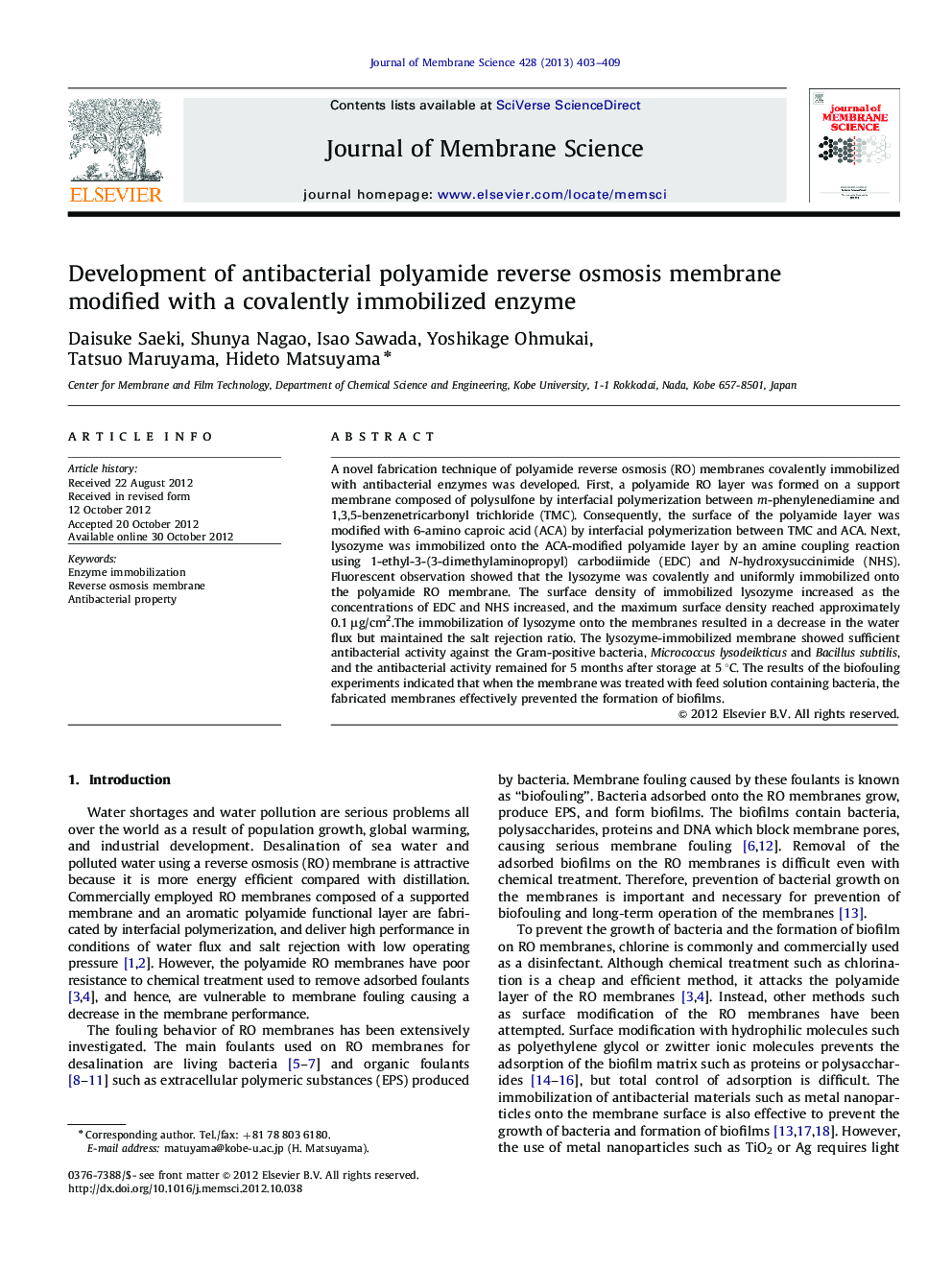| کد مقاله | کد نشریه | سال انتشار | مقاله انگلیسی | نسخه تمام متن |
|---|---|---|---|---|
| 634634 | 1456071 | 2013 | 7 صفحه PDF | دانلود رایگان |

A novel fabrication technique of polyamide reverse osmosis (RO) membranes covalently immobilized with antibacterial enzymes was developed. First, a polyamide RO layer was formed on a support membrane composed of polysulfone by interfacial polymerization between m-phenylenediamine and 1,3,5-benzenetricarbonyl trichloride (TMC). Consequently, the surface of the polyamide layer was modified with 6-amino caproic acid (ACA) by interfacial polymerization between TMC and ACA. Next, lysozyme was immobilized onto the ACA-modified polyamide layer by an amine coupling reaction using 1-ethyl-3-(3-dimethylaminopropyl) carbodiimide (EDC) and N-hydroxysuccinimide (NHS). Fluorescent observation showed that the lysozyme was covalently and uniformly immobilized onto the polyamide RO membrane. The surface density of immobilized lysozyme increased as the concentrations of EDC and NHS increased, and the maximum surface density reached approximately 0.1 μg/cm2.The immobilization of lysozyme onto the membranes resulted in a decrease in the water flux but maintained the salt rejection ratio. The lysozyme-immobilized membrane showed sufficient antibacterial activity against the Gram-positive bacteria, Micrococcus lysodeikticus and Bacillus subtilis, and the antibacterial activity remained for 5 months after storage at 5 °C. The results of the biofouling experiments indicated that when the membrane was treated with feed solution containing bacteria, the fabricated membranes effectively prevented the formation of biofilms.
Figure optionsDownload high-quality image (459 K)Download as PowerPoint slideHighlights
► Antibacterial reverse osmosis membranes immobilized with enzymes were developed.
► Enzymes were immobilized by interfacial polymerization and ammine coupling reaction.
► The lysozyme-immobilized membrane showed sufficient antibacterial activity.
► The fabricated membranes effectively prevented the formation of biofilms
Journal: Journal of Membrane Science - Volume 428, 1 February 2013, Pages 403–409